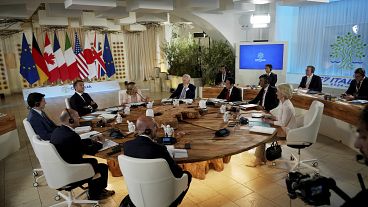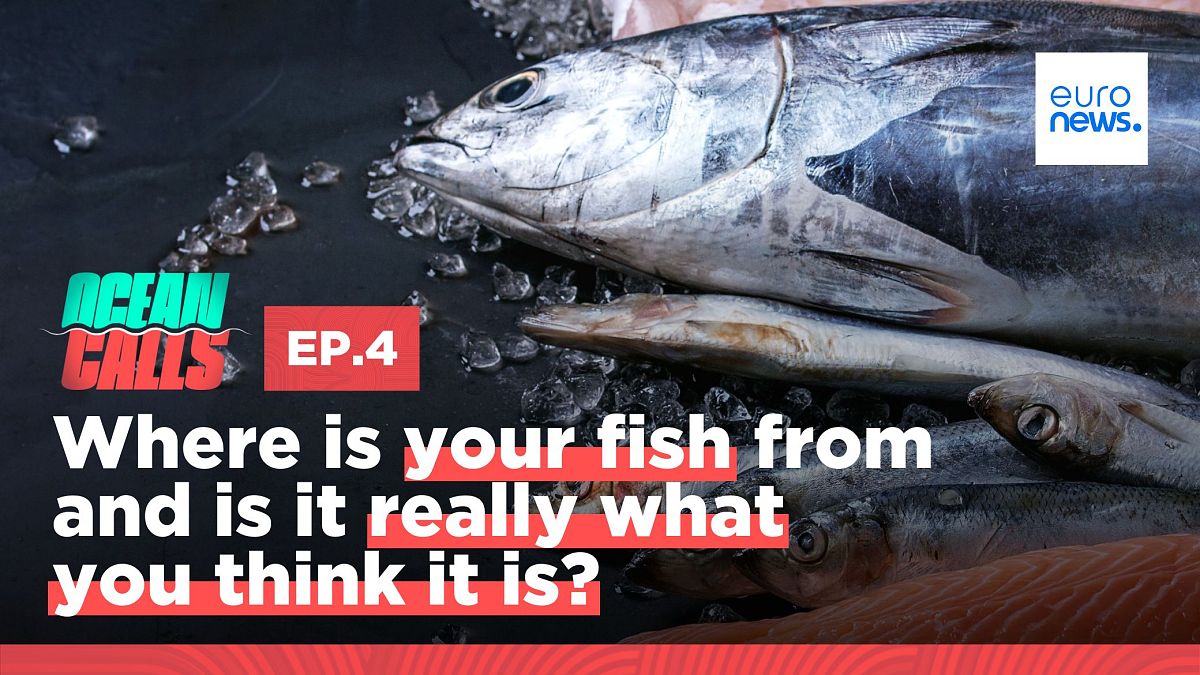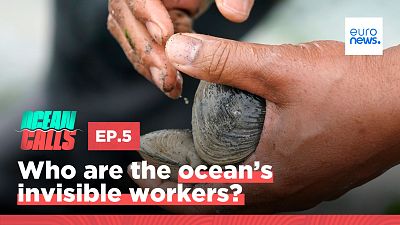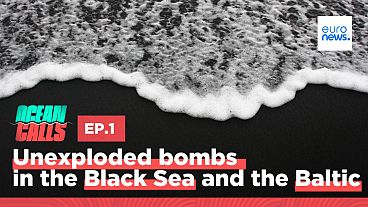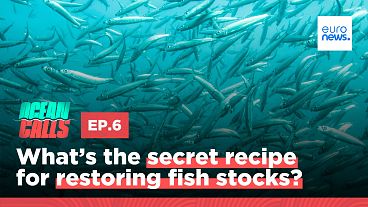It may be the case that the fish on your plate isn't what it claims to be. Such fraud is thought to be widespread, and In this episode of Ocean Calls we're exploring transparency and traceability, asking what the EU is doing to make sure you get what you paid for.
According to research conducted in 2015 by Oceana, a global advocacy organisation for ocean conservation, 30% of seafood served in Brussels restaurants doesn’t correspond to the species ordered by unwitting consumers.
“We even had one sample where we couldn't identify what species it was,” Vanya Vulperhorst, Oceana’s Europe Campaign Director in this episode of Ocean Calls said.
“I wasn’t the person who ate it,” she added, sounding relieved.
To establish the scope of mislabelling, the scientists took almost 300 DNA samples from different restaurants in the Belgian capital - including those situated at the European Parliament and the European Commission.
“It showed how difficult it is to know what you're eating if the product has been fried or if it has been processed,” Vulperhorst stressed.
Another more recent study conducted in 2021 showed that despite regulations, 38% of European seafood is mislabelled, and restaurants and shops are selling a much cheaper option as an overpriced treat.
Francois Mosnier, head of the Ocean Programme at Planet Tracker and the second guest of our episode, highlighted that canned tuna is one of the most mislabelled products on the market.
“There are 15 'species' of tuna. Some of them are super expensive... some are quite cheap. Some might not even be tuna at all,” he explained.
The EU data shows that tuna is the most consumed fish in the region. In 2019, an average European consumed 3.10 kg of tuna per year. Most of it was canned.
“It's really easy to say, here is tuna, whatever. But we don't say ‘mammal’ when we're about to buy, you know, chicken”, he added.
Traceability is a win-win situation for all
Planet Tracker is a non-profit consultancy that helps businesses, like the French retail giant Carrefour, achieve sustainable goals. In order to perform this task, the NGO analyses different sets of data, including focusing on the supply chain and financial areas.
“We could see what a corporation like Carrefour has in terms of information about their own supply chain… and the truth is not much,” Mosnier said.
To find out what any given seafood really is, experts from Planet Tracker connect various pieces of information together.
“For instance, if something says ‘tuna’ and it's in a can, if it comes from one specific part of the Pacific Ocean and if it's caught by a specific type of fishing gear, it's very likely to be skipjack tuna (the smallest and one of the most abundant tuna species)”, Mosnier explained.
By analysing this information, Planet Tracker has made surprising discoveries, including the fact that Carrefour was making lower margins on overfished species compared to the ones with good stock health.
“Perhaps it is the expectation of the retailers that consumers do want cod (which is overfished) and not an equivalent whitefish, even though quite frankly… I would not notice the difference”, Mosnier speculated.
Planet Tracker’s discoveries, then, can help retailers rethink both their offer and price policies to improve sustainability and profitability.
“And that can benefit the consumer as well, right? Because then you can change your price,” Mosnier added.
New EU rules bring hope
With 70% of the seafood imported and most catches happening outside the EU waters, the current seafood supply chain is hard to trace, Vulperhorst admitted. Positive changes, though, are still happening.
After five years of negotiations, in January 2024, the European Union adopted new traceability measures for seafood. One particular change is the requirement to provide all the import documents in digital form starting from 2026.
“This information is now on paper,” said Vulperhorst, explaining that it can sometimes be lost or damaged.
“[The new law] allows member states to know more or less what's coming in and for control authorities to be able to exchange information,” she added.
While the new law brings hope, Mosnier warns that the information can still get lost in the supply chain and not be provided to the consumer.
“Traceability is about gathering information… about a specific product. Transparency is about what you choose to do with that information. How much of it do you choose to disclose,” he said.
If you want to learn more about the new European regulations concerning traceability, listen to the full episode of Ocean Calls in the player above.
In this episode of Ocean Calls, we're embarking on an eye-opening journey to explore the origins of the seafood on our plates. We will also learn about the new EU regulations recently put in place to improve seafood traceability, and what remains to be done.
At the end of the episode, you’ll learn about mind-blowing pole and line tuna fishing in Indonesia and get a couple of tips for cooking fresh fish from Dutch chef Bart Van Olphen.
Ocean Calls is produced in partnership with the European Commission’s Directorate-General for Maritime Affairs and Fisheries.




